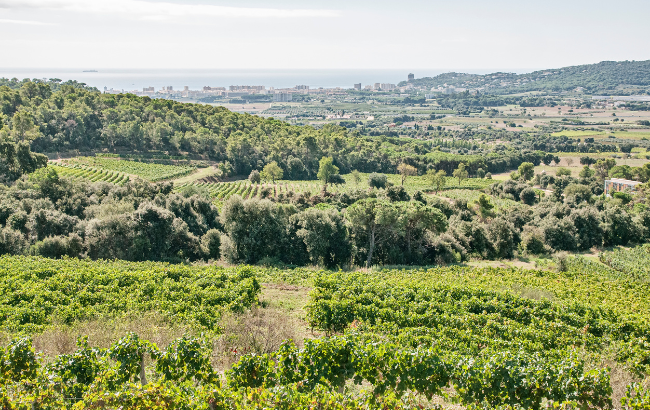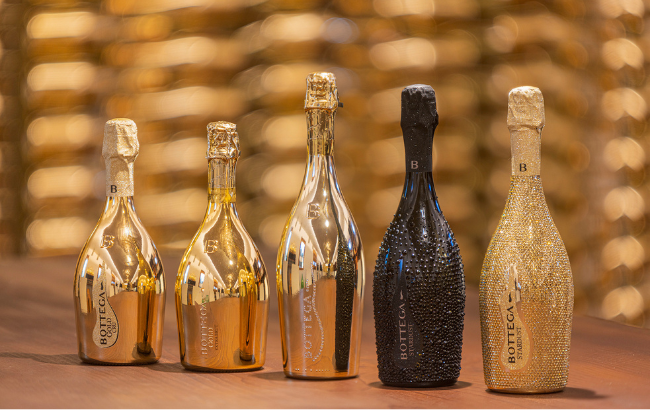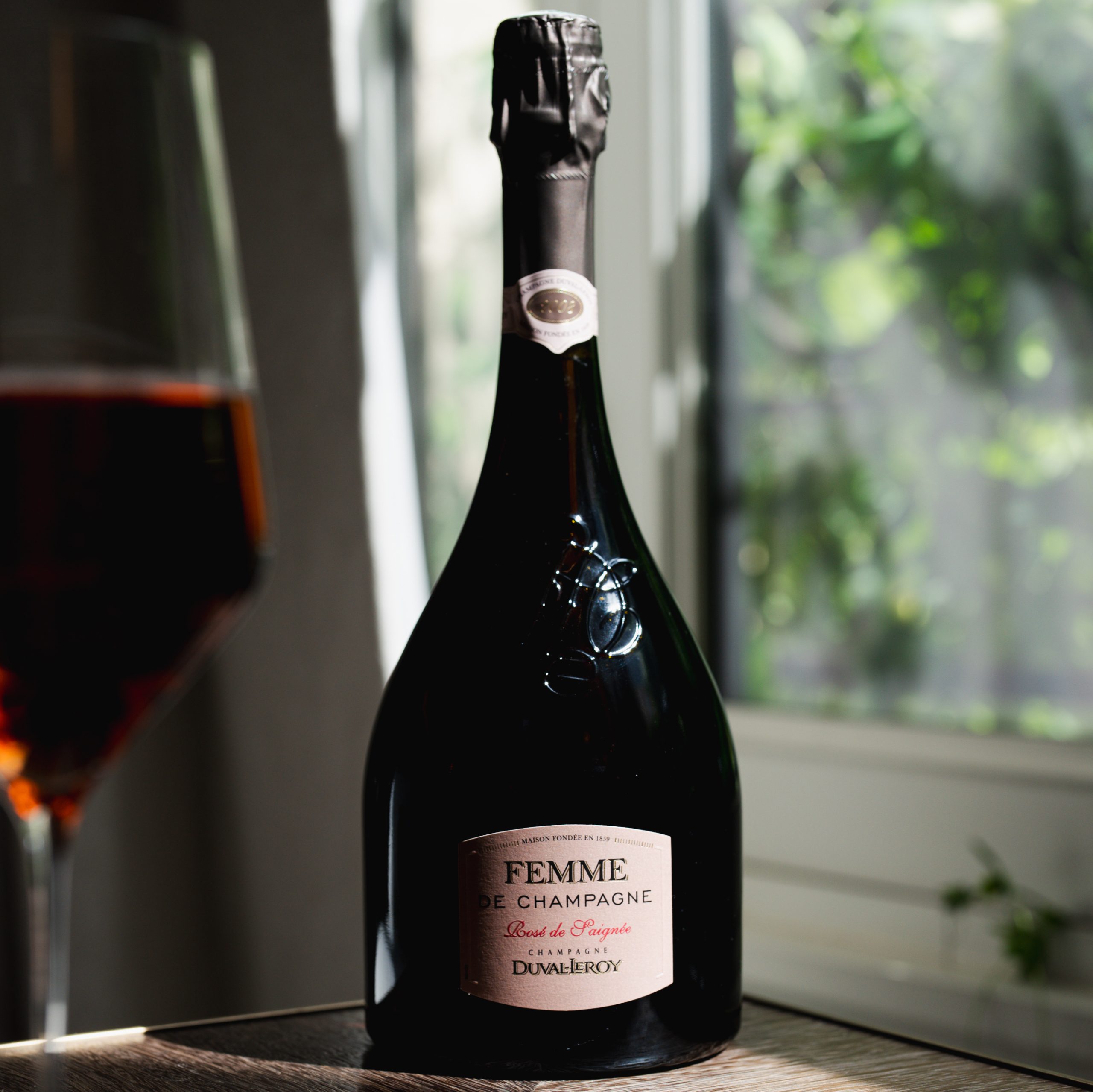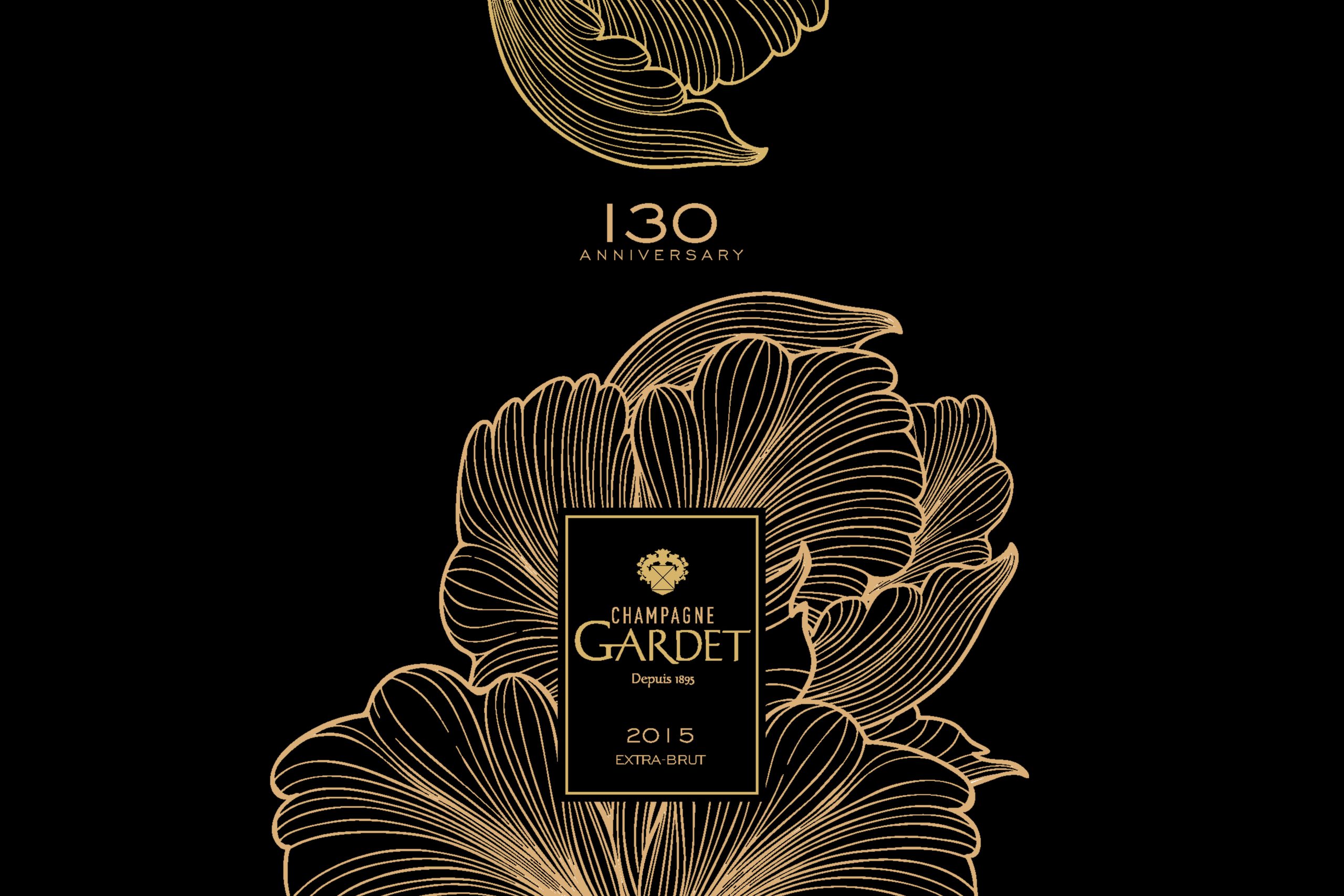This website uses cookies so that we can provide you with the best user experience possible. Cookie information is stored in your browser and performs functions such as recognising you when you return to our website and helping our team to understand which sections of the website you find most interesting and useful.
Can Pugnitello punch above its weight?
By Louis ThomasOnce on the cusp of extinction, the reemergence of Pugnitello in recent decades has been slow but steady. Louis Thomas discovers more from the producer making the most of this local Tuscan variety.
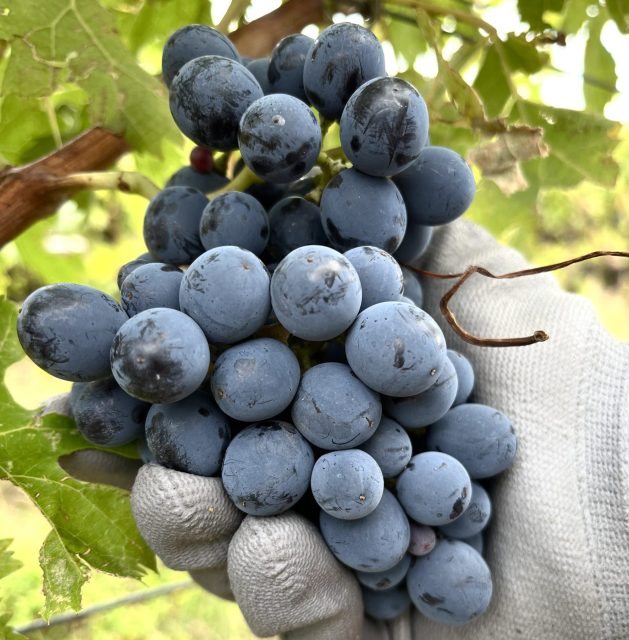
Translating as ‘Little Fist’ due to the compact, tight nature of its bunches, Pugnitello’s origins are unknown. At various points in modern times, it has been suggested that the grape could be synonymous with Montepulciano, the grape most closely-associated with Abruzzo, or Western Sicily’s Perricone, but subsequent DNA analysis has shown it to be distinct, and gained it its own entry in Italy’s Catalogo Nazionale delle Varietà di Vite in 2002. Pugnitello almost went extinct in the late 20th century without anyone really realising it.
San Felice winemaker Leonardo Bellaccini, who has been at the Chianti Classico estate since 1984, has been a driving force in reviving Pugnitello.
It was in 1987, in collaboration with the universities of Florence and Pisa, that San Felice planted the ‘Vitiarium’ – a 2.5 hectare experimental vineyard of more than 270 overlooked, unusual and unexpected grape varieties. This roster was whittled down to just over 100 Tuscan grape varieties, of which Pugnitello was one.
“At the very beginning, what we were looking for was what was missing in Sangiovese,” Bellaccini explains. “Back in the 1980s and early 90s, Sangiovese was lacking in colour, alcohol, and quality of tannins, because it was tough to ripen the grapes. I found that all those parameters were in Pugnitello – rich in colour, good acidity, and because the tannins were soft and sweet, it didn’t disturb the taste, so it had all the character of a great wine.”
“I did micro-vinifications of Pugnitello in ’89, ’90 and ’91, but it was really tiny because in the first vineyards I only had 18 vines of Pugnitello. Then in the early 90s I decided to graft a thousand vines in an old vineyard, and in ’95 I made the first three barrels, and the quality was even better – with the ageing in wood, you have the opportunity to see its evolution. At the end of the 90s, we started to plant more, and now San Felice has 12ha, making it our [San Felice’s] most-planted variety after Sangiovese.”
There are around 35ha of Pugnitello planted in Tuscany today, meaning that San Felice is the custodian of just over a third of the total.
San Felice has 150ha under vine in Chianti Classico, 85% of which is still Sangiovese. Asked why Sangiovese, Italy’s most-planted grape, has become the dominant variety in Tuscany (at the expense of others, such as Pugnitello), Bellaccini posits: “First of all you have to think that before the 60s and 70s, nobody was talking about quality – Italy is the biggest producer in the world, but the wine market is very young, so probably Sangiovese was able to produce good wine if you controlled the yields, but also big yields if you left it, so it probably became popular because it’s versatile, it can do both.”
Blends
Pugnitello is not a plucky upstart rival to Sangiovese, but rather a natural ally – San Felice uses a small proportion of the former in its Chianti Classico DOCG Borgo. A little, roughly 5-6% of the final blend, goes a long way, thanks in part to the variety’s thick, almost leathery skins.
“The Pugnitello helps the tannins to remain rich but also to become more friendly in the mouth,” says Bellaccini. “The goal is not to make a wine where you can detect that there is something else – it should taste like a warm area of Chianti Classico first.”
Indeed, Bellaccini is adamant that he does not want the Pugnitello to jut out in these blends, drawing a culinary comparison: “Chefs use several spices in a dish, but you shouldn’t taste the spice – you should taste the final dish.”
“Year-by-year, Pugnitello became our signature variety – something to give personality to the San Felice wines,” he argues. “A key moment is to be able to make a wine with a strong link to the territory, but also a direct connection to the producer. Pugnitello is a beautiful tool for that, I use it in several wines to give the San Felice fingerprint in the glass.”
Partner Content
The rules of Chianti Classico Gran Selezione mean that San Felice’s Poggio Rosso could include up to 10% of Pugnitello, or another local grape such as Colorino, however, the producer instead now opts for 100% Sangiovese.
Single varietal
Although usually found in the background, with its small bunches and the small number of vines limiting its presence, Pugnitello has been thrust into the limelight in San Felice’s Toscana IGT-designated single varietal Pugnitello.
It was in 2006 that San Felice released its first 100% Pugnitello wine to the public, hailing from the 2003 vintage. In the case of the 2021 vintage showcased to the assembled journalists, a 20-25 day fermentation on the skins at 30°C was followed by 18-20 months of maturation in French oak barriques. Just 8,000 bottles were produced.
The label of the 2021, which is part of San Felice’s new Vitiarium line, is intended to evoke the diversity of vines within the experimental vineyard.
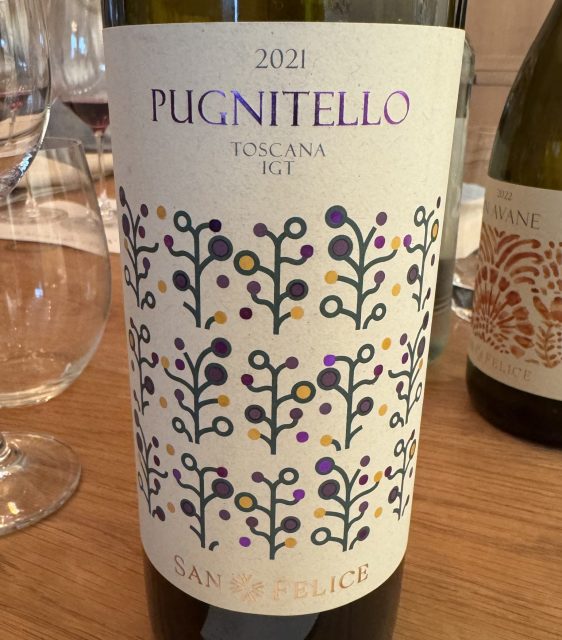
“Brightness and darkness of colour, the nose a mix of fruity and spicy together – every five minutes you taste it, and it gives a different sensation. It’s one of the reasons I’ve stayed at San Felice for so many years. I’ve started the project, and I want to see its end point,” says Bellaccini, who celebrated 40 years at the producer last year.
Though paired with cheese on this occasion (pleasant with a truffled brie and a goat’s cheese, but San Felice’s Vin Santo would still be my preference for anything blue), Bellaccini says that Pugnitello is also a good companion to cinghiale in umido (a wild boar stew) or peposo (a red wine and beef stew made with copious quantities of black pepper).
Future growth
Pugnitello offers San Felice something highly valuable as a brand – a selling point. Even with Italy’s abundance of indigenous grape varieties, there aren’t too many producers which have been able to make one their own. Certainly, San Felice is not the only one cultivating Pugnitello, Bellaccini refers to a “Pugnitello community” of wineries, but it is the producer which put it on the map, and rescued it from disappearing off the face of the earth altogether.
“Pugnitello is not hard to sell, it’s hard to cultivate, because the bunches are so tiny,” Bellaccini explains.
However, he notes that the variety’s low yield means that the vines require less water, an attribute which will come in very handy in a changing climate, especially given the ubiquity of dry farming in Tuscany.
Although its permitted across several Tuscan IGTs, including Alta Valle della Greve, Montecastelli, as well as the broader Toscana designation, Pugnitello is still very much a work in progress, but when one considers just how far it has come in the last 40 years, it is exciting to contemplate where else it might go before Bellaccini calls it time and hangs up his hydrometer.
Related news
Which new Tuscan wines should you be drinking?

